Tibetan culture to display splendor in Canada
Updated: 2014-11-01 22:47
By Da qiong and PALDEN NYIMA in Tibet(China Daily North America)
|
||||||||
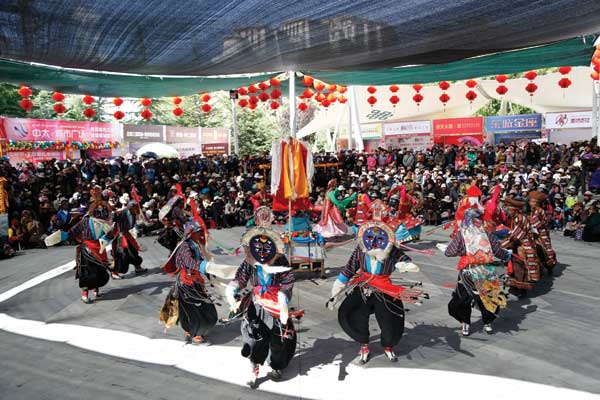 |
|
Tibetan dancers perform during the Shoton Festival in August in Tibet. The 2014 Canada China Tibetan Cultural Week will open in Vancouver from Nov 3-14. Da qiong / China Daily |
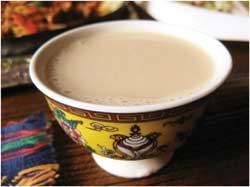 |
| How to sip butter tea |
|
Butter tea is made from tea leaves, yak butter, water and salt. Also known as po cha (Tibetan tea), cha suma (churned tea) or suyoucha in Mandarin. Because butter is the main ingredient, butter tea provides plenty of caloric energy and is particularly suited to high altitudes. The butter also may help prevent chapped lips. Butter tea is consumed in separate sips, and after each sip, the host refills the bowl to the brim. Thus, the guest never drains his bowl. If a visitor does not wish to drink, the best thing to do is to leave the tea untouched until the time comes to leave, and then drain the bowl. In this way, etiquette is observed, and the host will not be offended. Butter tea is also poured on tsampa (roasted barley flour), or the tsampa is dipped into it. |
"This time we conduct the China Tibetan Culture Week in the country of maple leaves," said Dorje Tsedrub, the vice-chairman of the Tibet autonomous region. "We believe it is an opportunity for Canadians to get to know more about Tibet and Tibetan culture via viewing Tibetan traditional songs, dances, thangka paintings, folk customs presentation, and through close communications with Tibetologists, Tibetan medical experts and high-ranking monks."
Activities this year include a thangka painting exhibition, Tibetan films, lectures by Tibetan scholars, Tibetan songs and dances, and Tibetan butter tea-making demonstration.
"Canada is a great county, and it is famous for its rich natural resources, advanced technology, and beautiful natural environment," said Tsedrub. "It will help to promote better understanding between various circles in Canada and China's Tibet, and it will help to deepen the bilateral friendship."
Since 2001, the China Tibetan Cultural Week has taken place in Australia, New Zealand, Belgium, Canada, Thailand, Spain, Italy, Denmark, Austria, Russia, Poland and Germany.
The cultural week is co-sponsored by China's State Council Information Office and the External Publicity Office of the People's Government of the Tibet autonomous region. The event aims to showcase Tibetan culture, economic, political, and social achievements.
Established in 1965, the Tibet autonomous region is a province-level autonomous region of the People's Republic of China.
With a land area covering more than 1.2 million square kilometers, Tibet has a population of more than 3 million. Located on the Tibetan Plateau, it is also known as the roof of the world. The average elevation of the region is more than 4,000 meters. Mount Qomolangma, the highest mountain in the world, is located on Tibet's border with Nepal.
Tibet neighbors are China's Xinjiang autonomous region in the north, and the provinces of Qinghai, Sichuan and Yunnan in the northeast, east and southeast, respectively.
Tibet has more than 82 million hectares of natural grassland, accounting for 68 percent of the region's land area and one-fifth of all of China's natural grassland.
Tibet's gross domestic product exceeded 80 billion yuan ($13 billion) in 2013, an annual increase of 12.1 percent. Total fixed-asset investment was 91.8 billion yuan, up 29 percent.
Per capita net income of farmers and herdsmen was 6,578 yuan in 2013, an increase of 15 percent from 2012. Per capita disposable income for urban residents was about 20,000 yuan, an increase of 11 percent.
Tibet welcomed 12.91 million domestic and overseas tourists last year, up 22 percent, according to the Tibet Tourism Bureau.
The influx of tourists brought 16.51 billion yuan ($2.68 billion) in revenue to the region in 2013, an increase of 30.6 percent year on year, accounting for 20.45 percent of the region's GDP.
Contact the writers at daqiong@chinadaily.com.cn and palden_nyima@chinadaily.com.cn

 Art Taipei 2014 draws international artists
Art Taipei 2014 draws international artists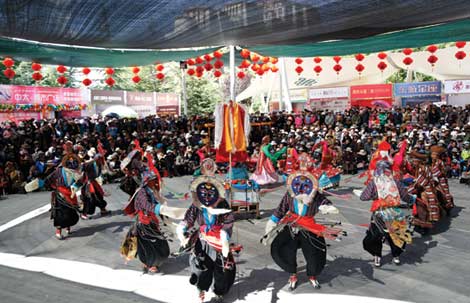
 Tibetan culture to display splendor in Canada
Tibetan culture to display splendor in Canada
 Reclaiming a piece of history
Reclaiming a piece of history
 Across Americas over the week (Oct 24-30)
Across Americas over the week (Oct 24-30)
 Halloween haunts China as popularity grows
Halloween haunts China as popularity grows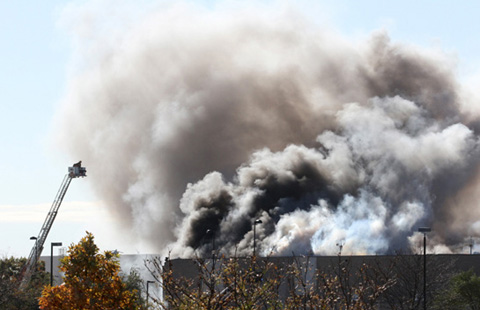
 At least 4 killed in small plane crash in Kansas
At least 4 killed in small plane crash in Kansas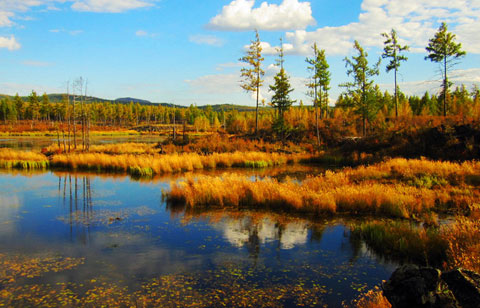
 Road trip to Arxan National Forest Park
Road trip to Arxan National Forest Park
 Top 10 richest Chinese in 2014
Top 10 richest Chinese in 2014
Most Viewed
Editor's Picks

|

|

|

|

|

|
Today's Top News
Consensus sought with US on governance of Internet
Space tourism set back by accident
Chinese Internet companies find Brazil attractive
US spaceship test flight failure kills at least one
Breast cancer a factor in Shanghai's low birth rate: doctor
The rise of intolerance
Olympics bid fuels drive for clean air
Lenovo buys Motorola Mobility
US Weekly

|

|







